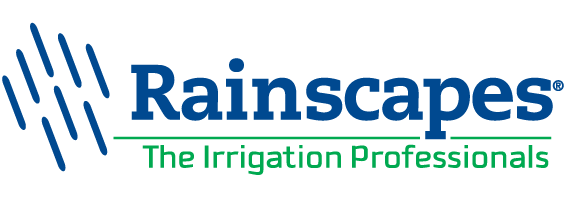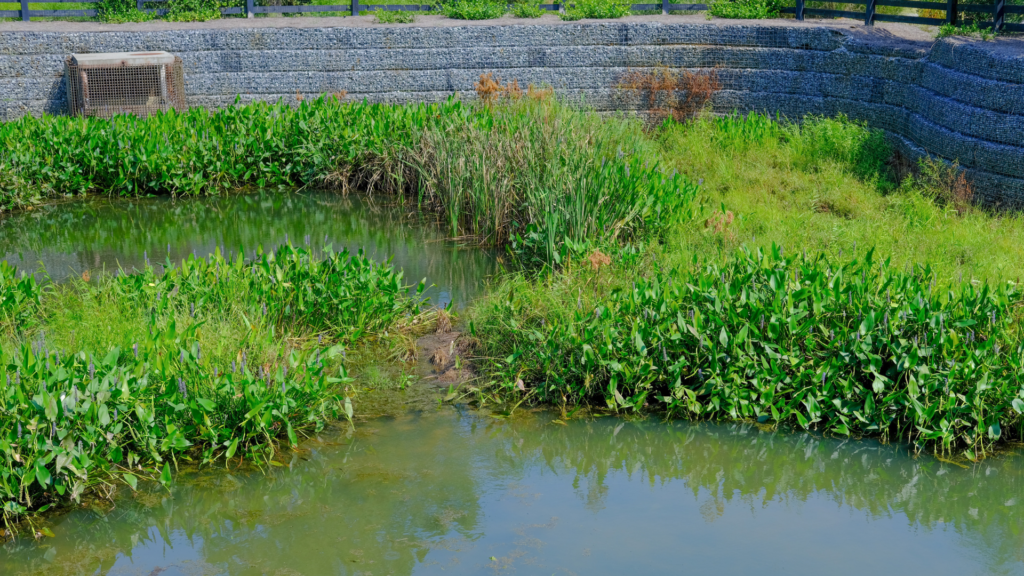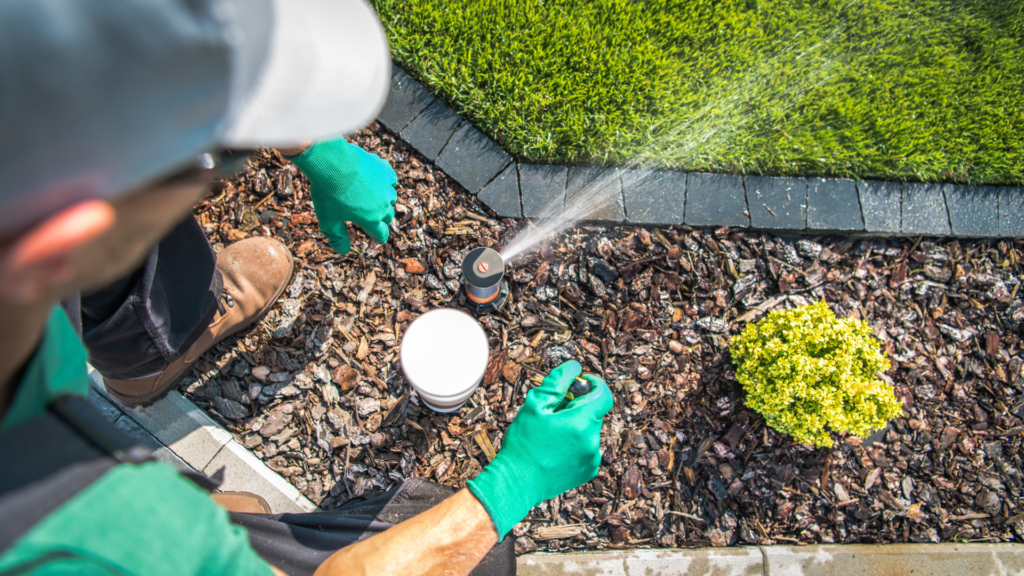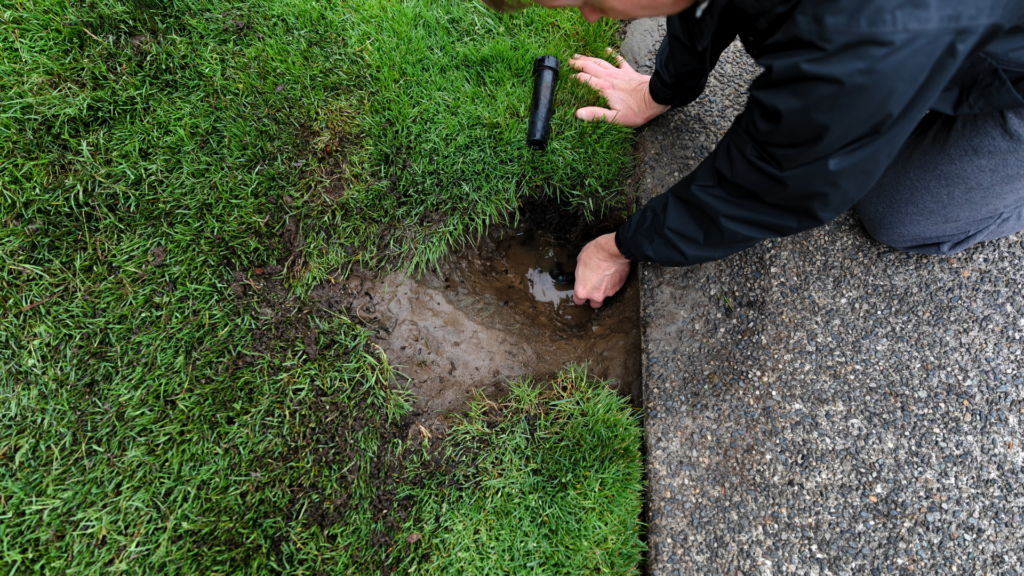
29 Oct Addressing Irrigation System Inefficiencies Before Fall
It’s time to get your irrigation system in top shape before fall hits Knoxville. As the summer heat starts to fade, you’ll want to ensure your system is running efficiently. Addressing irrigation issues now can save you headaches later and keep your yard looking great.
Water waste and uneven coverage are two big problems that can affect your irrigation system. Not only do they lead to higher water bills, but they can also harm your plants and lawn. Fixing these issues before the colder months arrive helps maintain your landscape and saves water.
From checking for leaks to adjusting sprinkler heads, small efforts make a big difference. Let’s dive into what you need to do to prepare your irrigation system for the fall season.
Signs of Irrigation System Inefficiencies
Spotting inefficiencies in your irrigation system early can save you from bigger problems down the road. Here are some common signs that indicate your system needs attention:
 Puddles or Pooling Water: If you notice standing water in parts of your lawn, it’s a clear sign that your system is overwatering these areas. This could be due to a malfunctioning sprinkler head or incorrect system settings.
Puddles or Pooling Water: If you notice standing water in parts of your lawn, it’s a clear sign that your system is overwatering these areas. This could be due to a malfunctioning sprinkler head or incorrect system settings.- Dry or Brown Patches: Areas of your yard that are dry or turning brown indicate under-watering. This uneven coverage suggests that certain sprinkler heads may not be reaching these spots effectively.
- High Water Bills: A sudden increase in your water bill is a strong indicator that your system is using more water than necessary. This could mean leaks, broken pipes, or incorrectly programmed timers.
- Weak Water Pressure: Low water pressure from your sprinkler heads can mean a blockage or a leak somewhere in the system. Ensuring all parts are working correctly will maintain proper water flow.
Importance of Addressing Issues Before Fall
Fixing issues in your irrigation system before fall is essential for several reasons. First and foremost, addressing problems now helps your lawn and plants prepare for the winter months. Healthy roots are more likely to survive colder temperatures, giving your yard a head start come spring.
Uneven watering and wasteful practices can lead to plant stress, making them more susceptible to disease and pests. By ensuring even water distribution and eliminating waste, you create a more robust and resilient landscape.
Moreover, fixing leaks and optimizing your system can save you money on water bills. With rainfall typically increasing during the fall, an efficient system can better handle the balance between rainfall and irrigation, preventing overwatering issues.
Finally, addressing these problems now allows you to avoid the rush of last-minute repairs as the weather becomes less predictable. By taking proactive steps, you ensure that your irrigation system runs smoothly all year long.
Common Causes of Water Waste
Water waste in irrigation systems can stem from various factors. Identifying these causes can help you make necessary adjustments to save water:
- Leaking Sprinkler Heads: Sprinkler heads often get damaged or wear out over time, causing leaks. Regularly inspect and replace faulty heads to prevent this issue.
- Poor System Design: A poorly designed system with improper spacing of sprinkler heads can lead to overlapping or missed areas, causing water waste.
- Incorrect Timer Settings: If the timer is not set correctly, you might be overwatering your lawn. Adjust the settings to match the specific needs of each zone and season.
- Clogged Nozzles: Debris can clog nozzles, reducing water flow and coverage. Cleaning and maintaining nozzles regularly can help ensure even distribution.
- High Water Pressure: Excessive pressure can cause sprinkler heads to mist or spray water too far, leading to waste. Installing pressure regulators can fix this problem.
Identifying Uneven Coverage
Uneven coverage in your irrigation system can lead to dry patches or overly wet areas in your lawn. To ensure your system is watering your yard evenly, follow these tips:
- Visual Inspection: Observe your lawn after a watering cycle. Look for areas that seem too wet or too dry compared to the rest of the yard. These spots indicate where adjustments are needed.
- Catch Can Test: Place several small containers (like tuna cans) around your yard before running your sprinkler system. After a full cycle, measure the water collected in each container. Even water levels mean good coverage; uneven levels indicate a problem.
- Check Sprinkler Heads: Inspect each sprinkler head to ensure they are not blocked and are spraying water as intended. Sometimes, heads get tilted or clogged, disrupting proper water distribution.
- Review System Layout: Double-check that your sprinklers are placed and angled correctly for optimal coverage. Adjustments in placement and direction can often resolve uneven watering issues.
Checking for Leaking Sprinkler Heads
Leaking sprinkler heads are a common cause of water waste in irrigation systems. Here’s how to identify and fix these leaks:
- Visual Inspection: Turn on your irrigation system and walk around your yard. Look for water pooling around sprinkler heads or streams of water running down the street. These are signs of leaks.
- Check for Broken Parts: Examine each sprinkler head for visible damage. Cracked or broken heads often leak. If you find any damaged parts, replace them immediately.
- Loose Connection: Sometimes, sprinkler heads may simply have a loose connection. Gently tighten the head to see if this fixes the leak. Be careful not to over-tighten, as this can cause further damage.
- Clogged Nozzles: Debris can cause a sprinkler head to leak or spray unevenly. Clean out any debris and test the sprinkler again to ensure it operates correctly.
- Water Pressure: High water pressure can make sprinkler heads leak. Check your system’s pressure and adjust it to the recommended level for your sprinkler heads.
Proper Sprinkler Head Adjustment
Adjusting your sprinkler heads correctly is essential for even water distribution. Here’s a simple guide:
 Positioning: Make sure each sprinkler head is positioned correctly. Heads should be upright and level with the ground to avoid uneven spray patterns.
Positioning: Make sure each sprinkler head is positioned correctly. Heads should be upright and level with the ground to avoid uneven spray patterns.- Spray Pattern: Adjust the spray pattern to match the area you need to water. Most sprinkler heads have a screw or adjustment knob. Turn this to change the spray arc to cover the desired zone.
- Overlap Coverage: Ensure that the spray from one sprinkler head overlaps slightly with the next. Overlapping ensures no dry patches are left between sprinklers. Check for any areas where water coverage is insufficient and make necessary adjustments.
- Water Pressure: Ensure your system operates at the correct pressure. Too much pressure can cause misting, which wastes water. Too low a pressure can lead to inadequate coverage.
- Testing: After making adjustments, test the system to ensure even coverage. Run a full cycle and inspect your yard for dry spots or overly wet areas.
Inspecting the Irrigation Controller
The irrigation controller is the brain of your system. Keeping it in good working order ensures that your yard receives the proper amount of water. Follow these steps to inspect and adjust your controller:
- Check the Settings: Start by reviewing the current settings. Ensure the watering schedules align with seasonal needs and local water restrictions. Adjust run times for each zone to prevent overwatering.
- Backup Battery: Most controllers have a backup battery to save settings during power outages. Replace this battery annually to avoid losing your schedule if the power goes out.
- Sensor Connections: Many systems have rain or soil moisture sensors. Ensure these are correctly connected and operating. Test sensors to confirm they shut off the system during rain or when the soil is already moist.
- System Test: Run a manual test for each zone. Observe the operation of the sprinklers to ensure they start and stop as programmed. Pay attention to any irregularities or malfunctions.
- Weather-Based Adjustments: Consider using the weather-based setting if your controller has it. These controllers adjust watering schedules based on local weather conditions, optimizing water use.
Evaluating the Efficiency of Your Irrigation System
Conducting an efficiency audit of your irrigation system can identify areas for improvement. Here’s how to evaluate the overall performance:
- Visual Inspection: Walk around your yard with the system running. Look for leaks, uneven spray patterns, and dry or soggy spots.
- Catch Can Test: Place several small containers around your yard. Run your irrigation system for a set period and measure the water in each container. Even levels indicate good efficiency.
- Check for Leaks: Monitor your water meter before and after running the system. A noticeable spike in usage suggests leaks that need fixing.
- Schedule Review: Assess your watering schedule. Reduce or increase run times based on current season and weather. Overwatering wastes water, while under-watering stresses plants.
- Sprinkler Head Types: Ensure you are using the right type of sprinkler heads for each area. Drip irrigation might be better for flower beds, while rotary heads work well for larger lawns.
- Pressure Regulation: Confirm that your system has the correct water pressure. Install pressure regulators if needed to maintain optimal pressure levels.
Using Smart Irrigation Technology
Switching to smart irrigation technology can significantly improve the efficiency of your irrigation system. Here are a few key benefits:
- Automatic Adjustments: Smart controllers can adjust watering schedules based on local weather conditions, ensuring your lawn gets the right amount of water without waste.
- Soil Moisture Sensors: These sensors measure the moisture levels in your soil and only water when necessary. This prevents both overwatering and underwatering.
- Remote Control: Many smart systems allow you to control your irrigation from your smartphone, making it easy to adjust settings even when you’re not home.
- Water Savings: By using water more efficiently, smart irrigation systems can help reduce your water bill and conserve a precious resource.
Seasonal Maintenance Tips
Preparing your irrigation system before fall involves several important maintenance tasks. Here’s a checklist to ensure your system is ready:
 Inspect Sprinkler Heads: Check for leaks and make sure they are properly aligned.
Inspect Sprinkler Heads: Check for leaks and make sure they are properly aligned.- Clean Nozzles: Remove dirt and debris to ensure even water distribution.
- Check for Clogs: Inspect pipes and hoses for blockages that could impede water flow.
- Adjust Timers: Update your irrigation schedule to match the changing weather patterns.
- Test the System: Run a full system test to identify any issues that need fixing.
- Insulate Exposed Pipes: As temperatures drop, insulate any above-ground pipes to prevent freezing.
Benefits of Professional Inspection
Having a professional inspect and adjust your irrigation system offers several benefits:
- Expertise: Professionals can quickly identify issues that you might miss.
- Proper Adjustments: They ensure all parts of your system are correctly set up for optimal performance.
- Long-Term Savings: Minor issues can lead to major problems if left unaddressed. A professional inspection can save you money in the long run by preventing costly repairs.
- Peace of Mind: Knowing your system is in good hands allows you to focus on other tasks.
Preparing Your Irrigation System for Winter
As winter approaches in Knoxville, it’s important to prepare your irrigation system for the cold weather. Follow these steps to winterize your system:
- Drain Water Lines: Remove all water from the irrigation lines to prevent freezing and bursting.
- Blow Out Lines: Use an air compressor to blow out any remaining water in the pipes.
- Shut Off Water Supply: Turn off the water supply to the irrigation system to avoid leaks.
- Insulate Valves and Controllers: Protect these components from freezing by wrapping them in insulation material.
- Store Removable Parts: If your system has removable parts, store them indoors to prevent damage.
Conclusion
Maintaining an efficient irrigation system is crucial for water conservation and proper lawn care, especially as the seasons change. Addressing issues before the fall, using smart technology, and following a seasonal maintenance checklist can save you headaches and water. Regular professional inspections and preparing your system for winter are key steps in ensuring longevity and efficiency.
Ready to optimize your irrigation system in Knoxville? Contact Rainscapes today for expert advice and top-notch services to keep your system running smoothly year-round. Let’s work together to make your lawn the best it can be!





Sorry, the comment form is closed at this time.